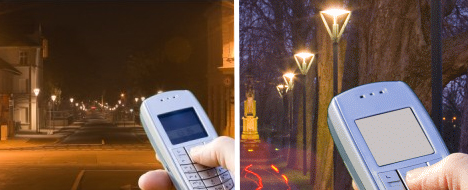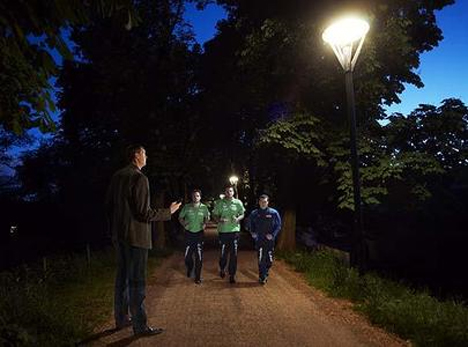10 Amazing Tricks to Play with your Brain
10 Amazing Tricks to Play with your Brain
Mind is the aspect of intellect and consciousness experienced as combinations of thought, perception, memory, emotion, will and imagination, including all unconscious cognitive processes. Mind manifests itself subjectively as a stream of consciousness. Neuroanatomists usually consider the brain to be the pivotal unit of what we refer to as mind. The Human Brain tricks us whenever it can. You don’t actually see what it is in real or you don’t even actually hear or smell the way it should be. Here is the time to play trick with the human brain. I assure here, trying them is completely safe.
10. Ganzfeld Procedure
At first this might sound like a bad practical joke. Begin by tuning a radio to a station playing static. Then lie down on a couch and tape a pair of halved ping pong ballsover your eyes. Within minutes you should begin to experience a bizzare set of sensory distortions.
Some people see horses prancing in the clouds or hear the voice of a dead relative. It turns out that the mind is addicted to sensation so that when there’s little to sense (that’s the purpose of ping pong balls and static) your brain ends up inventing its own.
9. Shrink your Pain
In case you experience an injury, then see the injured part with an inverted binoculars, soon your pain will seem to be decreasing in its magnitude.
Recently, a reasearch at Oxford University has lead to the discovery of a new pain killer – the inverted binoculars. The scientists demonstrated that the subjects who looked at their wounded hands through wrong end of the binoculars, making the hand appear smaller, experienced significantly less pain and decreased swelling. According to the researchers, this demonstrates that even basic bodily sensations such as pain are modulated by what we see. So next time if you stub your toe or cut a finger, do yourself a favour, look away!
8. Confuse your Proprioreception
This requires two chairs and a blind fold. The person wearing the blindfold should sit in the rear chair, staring at the back of the person sitting in the front. The blindfolded person then reach around and place his hand on the nose of the other person. At the same time he should place his other hand on his own nose and begin gently stroking both noses. After about 1 minute, more than 50% of the subjects report their nose as incredibly long. Therefore this is called Pinocchio’s Effect.
The Pinocchio effect is an illusion that ones nose is growing longer, as happened to the literary character, Pinocchio when he told a lie. It is an illusion of proprioception, reviewed by Lackner (1988).
To explain the effect the other way, a vibrator is applied to the biceps tendon while one holds one’s nose with the hand of that arm. The vibrator stimulates muscle spindles in the biceps that would normally be stimulated by the muscle’s stretching, creating a kinesthetic illusion that the arm is moving away from the face. Because the fingers holding the nose are still giving tactile information of being in contact with the nose, it appears that the nose is moving away from the face too, in a form of perceptual capture. Similar phenomenon happens using the blindfolded method.
7. Confuse your Mindedness
Lift your right foot a few inches from the floor and then begin to move it in a clockwise direction. While you’re doing this, use a finger your right index finger to draw a number 6 in the air. Your foot will turn in an anticlockwise direction and there’s nothing you can do about it!
The left side of your brain, which controls the right side of your body, is responsible for rhythm and timing. The left side of your brain cannot deal with operating two opposite movements at the same time and so it combines them into a single motion.
6. Confuse your Hearing
This can be performed with three people, one being subject and other two objects/ observers and we also need a headset connected to routine plastic pipes on the either side. Ask the subject to sit on a chair equidisant between you and the second observer. Now each one of you hold the pipes from the headset on the corresponding sides and one by one speak into the pipes. The subject will rightly tell the direction of the sound. Now exchange the pipes and repeat voicing into the pipes. The subject’s brain will get confused and he’ll point in the opposite direction of sound.
Sound localization is a listener’s ability to identify the location or origin of a detected sound in direction and distance or the methods in acoustical engineering to simulate the placement of an auditory cue in a virtual 3D space. The human auditory system has only limited possibilities to determine the distance of a sound source, mainly based on inter-aural time differences, exchanging the pipes would cause perception by the opposite sided neurons in the brain only and thus the subject will not be able to localize the sound.
5. Confuse your Depth Perception
Depth perception is the visual ability to perceive the world in three dimensions (3D). Looking at a sight that you have not seen before or entering into a 3d cinema with one eyes closed will alter the way your mind perceives things.
This would not happen for most already seen things because your brain is tuned to judge the time and space accurately. However, your brain will not be able to fill the gap if you use one eye. Depth perception arises from a variety of depth cues. These are typically classified into binocular cues that require input from both eyes and monocular cues that require the input from just one eye. Binocular cues include stereopsis, yielding depth from binocular vision through exploitation of parallax. Since (by definition), binocular depth perception requires two functioning eyes, a person with only one functioning eye has no binocular depth perception. And hence stepping into a 3d cinema will not be an amazing phenomenon as it used to be. This is more so in people who are blinded with one eye by birth.
4. Feel a Phantom Sensation
Phantom sensations are described as perceptions that an individual experiences relating to a limb or an organ that is not physically part of the body. Sensations are recorded most frequently following the amputation of an arm or a leg, but may also occur following the removal of a breast or an internal organ.
3. 18000 Hz Sine Wave
18000Hz Sinewave (under 20s)
Try hearing this sound. It is called “under 20s” sound as the elder’s can’t perceive it. It is a sine wave at 18,000 Hz (by comparison, a dog whistle sounds at 16,000 – 22,000 HZ – meaning a dog can hear this sound as well). This sound is used by some teenagers as a ring tone on their cellphone so that only they (and others of their age group ofcourse) can tell when the phone is ringing. It is also occasionally used in England to play very loud in areas that authorities don’t want teens to congregate in, as the noise annoys them.
The inner ear of the humans have a functional design to hear sounds in a range of a frequency. Hearing is not merely a function of ears but the oscillation amplitude is conducted to the brain. As people get older they lose the ability to hear higher pitched sounds. As people get older they lose the ability to hear higher pitched sounds – that is the reason that only young people can hear this sound – it is too high for most people over the age of 20.
2. Confuse your photoreception
Stare at the central point (plus sign) of the black and white picture for atleast 30 seconds and then look at a wall near you, you will see a bright spot, twinkle a few times, what do you see? or even who do you see?
Stare at the eye of the red parrot while you slowly count to 20, then immediately look at one spot in the empty birdcage. The faint, ghostly image of a blue-green bird should appear in the cage. Try the same thing with the green cardinal, and a faint magenta bird should appear.
When an image is looked at for a length of time (usually around 30 seconds) and then replaced with a white field, one type pf an effect called an afterimage can be seen. The common explanation given for an afterimage is that the photoreceptors (rods and cones) in the eye become “fatigued”, and do not work as well as the those photoreceptors that were not affected (the “fatigue” is actually caused by the temporary bleaching of the light sensitive pigments contained within the photoreceptors) This results in the information that is provided by the photoreceptors not being in balance, causing the afterimages to appear. As the photoreceptors become less “fatigued”, which takes between ten and thirty seconds, the balance is recovered, resulting in the afterimage disappearing.
Now do another trick to confuse your photoreceptors. This will temporarily blind you from one eye (for around 30 seconds and don’t worry it is of no harm) Go into a room, shut the door and turn out the lights so that the room is mostly dark. Wait until your eyes adapt to the darkness. You should be able to make out the basic shapes of the room from the tiny bit of light coming in from under the door. Next, close your right eye and cover it with your hand. Turn the light on, keeping your eye closed and covered. Leave the light on for about a minute or until your left eye has adapted to the light. Uncover your eye and look around the darkened room.
What do you see? What you might experience is an illusion discovered by researcher Uta Wolfe in which it seems that your left eye is closed, even though it is open.
The explaination to this is the visual cycle that takes time to be adapted, when it is not adapted as for the left eye, the eye will send wrong signals to the brain thus image would be darkened for the left eye until it adapts.
1. Confuse your Cognition
Take a look at the spinning girl. Do you see it spinning clockwise or counter-clockwise? I see it spinning counter-clockwise, but i was able to switch it in the other direction, its hard for many people. Give it a try.
The spinning girl is a form of the more general spinning silhouette illusion. The image is not objectively “spinning” in one direction or the other. It is a two-dimensional image that is simply shifting back and forth. But our brains did not evolve to interpret two-dimensional representations of the world but the actual three-dimensional world. So our visual processing assumes we are looking at a 3-D image and is uses clues to interpret it as such. Or, without adequate clues it may just arbitrarily decide a best fit – spinning clockwise or counterclockwise. And once this fit is chosen, the illusion is complete – we see a 3-D spinning image.
By looking around the image, focusing on the shadow or some other part, you may force your visual system to reconstruct the image and it may choose the opposite direction, and suddenly the image will spin in the opposite direction.
Labels: Interesting Information

















.jpg)








